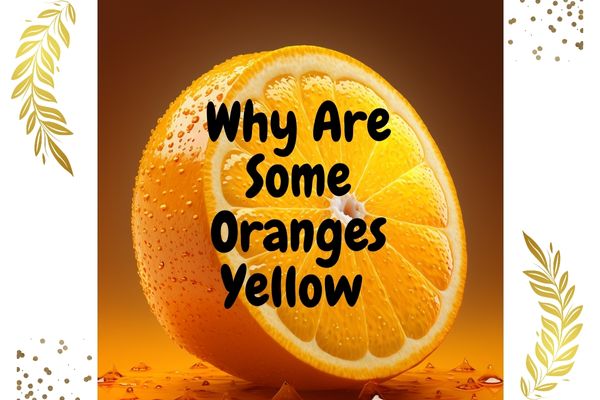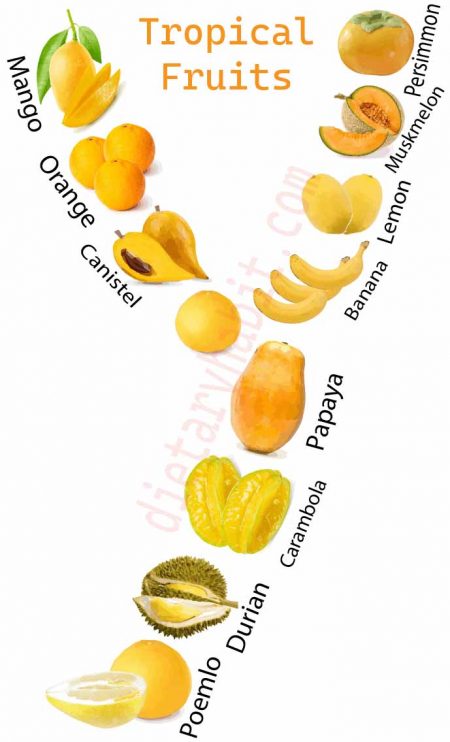Why Are Some Oranges Yellow?

When we think of oranges, we typically think of the color orange. However, did you know that there are also yellow oranges? In this blog post, we will explore the reasons behind the varying colors of oranges and why some oranges are yellow.
What Causes Oranges to be Yellow?
Oranges can be yellow for several reasons, depending on the variety of orange. One of the primary reasons for the yellow color in oranges is the presence of carotenoids, a group of pigments found in high concentrations in orange and yellow fruits. Beta-carotene is a specific type of carotenoid that is responsible for the bright yellow color in some types of oranges. The varying levels of carotenoids, including beta-carotene, in oranges result in different shades of orange and yellow, ranging from pale yellow to deep orange.
In some cases, the yellow color in oranges can also be due to the maturity of the fruit. Oranges that have been left on the tree for an extended period can become overripe and may turn yellow as a result. However, it is essential to note that not all yellow oranges are overripe. Some varieties, such as the Persian and Valencia oranges, are naturally yellow and may have a slightly sweeter taste compared to the more common orange varieties.
Additionally, environmental factors such as temperature, sunlight, and soil nutrients can affect the color of oranges, including their level of carotenoids.
Environmental Factors Making Oranges Yellow
The environment plays a significant role in the color of oranges. Oranges need a particular combination of temperature, sunlight, and soil nutrients to develop their characteristic color. The pigments responsible for the orange color in oranges are called carotenoids, which are synthesized in the fruit during its growth process.
The temperature at which the oranges are grown can influence the production of carotenoids, as they are sensitive to the temperature changes. Oranges grown in colder temperatures may have more green on their skin, while oranges grown in warmer temperatures may have a deeper orange or yellow color. As a result, oranges grown in regions with cooler temperatures may have a lighter color and tend to be less sweet, while oranges grown in warmer regions tend to have a darker color and be sweeter.
Sunlight is also a critical factor that affects the color of oranges. Oranges need plenty of sunlight to develop their sweet flavor and distinctive color. Too much or too little sunlight can affect the production of carotenoids, which results in oranges that are either too pale or too dark.
Finally, soil nutrients can also play a role in the color of oranges. Oranges require a specific balance of nutrients to grow and develop their color. An inadequate amount of nutrients in the soil can lead to weaker trees and less colorful fruit.
In summary, the environment can affect the color of oranges by influencing the production of carotenoids during the fruit’s growth process. Factors such as temperature, sunlight, and soil nutrients all play a role in determining the final color of the fruit.
Are Yellow Oranges Different
Yes, yellow oranges are different from the more common orange varieties, both in appearance and taste. Yellow oranges can be a natural variation of orange color, but some varieties, such as Persian and Valencia oranges, are naturally yellow.
Compared to other oranges, yellow oranges often have a sweeter and more floral taste. They are also slightly less acidic than other oranges, which can make them a good choice for people who prefer a milder citrus flavor. Some yellow oranges, such as the Persian variety, have a thinner skin that is easy to peel, making them a popular choice for snacking and juicing.
In addition to their flavor and appearance, yellow oranges may also have slightly different nutritional profiles than other oranges. For example, yellow oranges may contain more beta-carotene, a type of carotenoid that gives them their bright yellow color. Beta-carotene is a precursor to vitamin A and is essential for maintaining healthy vision and skin.
Overall, yellow oranges can be a delicious and nutritious alternative to more common orange varieties, and their unique flavor and appearance make them a favorite of many citrus lovers.
Health Benefits of Yellow Oranges
Yellow oranges are not just aesthetically pleasing; they are also incredibly nutritious. Yellow oranges contain high levels of vitamin C and beta-carotene, which provide a host of health benefits. Beta-carotene is converted to vitamin A in the body, which is essential for maintaining healthy vision and a robust immune system. Additionally, consuming foods high in carotenoids is associated with a reduced risk of chronic diseases such as cancer and heart disease.
Culinary Uses of Yellow Oranges
Yellow oranges, such as the Navel and Valencia varieties, are often used for juicing and snacking. They have a tangy flavor that is perfect for balancing out sweeter fruits in a fruit salad. Yellow oranges are also great for smoothies, as they add a refreshing citrus flavor to the mix. When baking, try using yellow oranges in place of traditional orange varieties for a unique twist on a classic recipe.
How Can You Buy Yellow Oranges
If you’re looking to buy yellow oranges, you may need to look beyond the typical oranges found in most grocery stores, which are often the more common orange varieties like navel oranges. Here are a few tips to help you find and buy yellow oranges:
- Check with local farmers markets: Local farmers markets often have a wider variety of fruits and vegetables, including less common types of oranges. You may be able to find yellow oranges such as Valencia or Persian oranges there.
- Look for specialty grocery stores: Some specialty grocery stores may carry less common orange varieties, including yellow oranges. Check with your local health food store, natural foods market, or specialty grocery store to see if they carry yellow oranges.
- Check online: You may be able to find yellow oranges for sale online. Some online grocers specialize in selling unusual or hard-to-find produce, including yellow oranges.
- Ask your local grocer: If you have a particular grocery store you like to shop at, ask the produce manager if they can order yellow oranges for you. They may be able to order them from their supplier if they don’t typically carry them.
Once you have found a source for yellow oranges, look for fruit that is firm, heavy for its size, and free of blemishes or soft spots. You can also check the stem end of the orange; if it’s green, the fruit is likely fresh. Store yellow oranges at room temperature and enjoy them within a week or so for the best flavor.
Last Words
In conclusion, the color of oranges is determined by the levels of carotenoids present in each variety. Environmental factors can also play a role in the color of oranges. Yellow oranges are not just visually appealing, but they are also loaded with essential vitamins and minerals that provide numerous health benefits. So next time you’re in the produce section, don’t overlook the yellow oranges – they might just surprise you with their unique flavor and health benefits.




